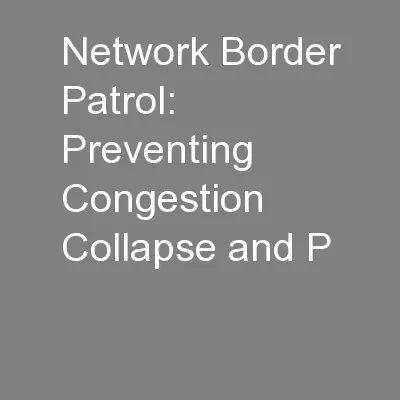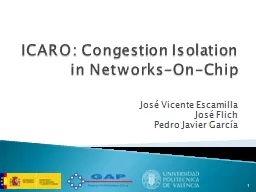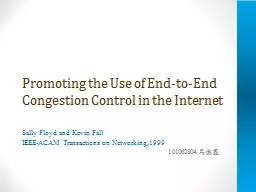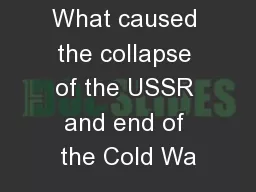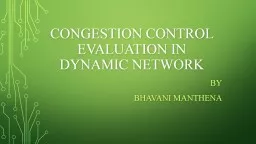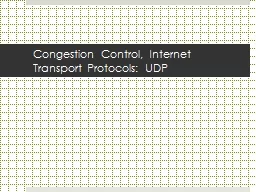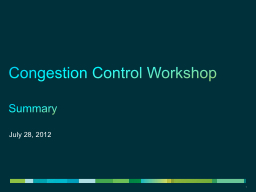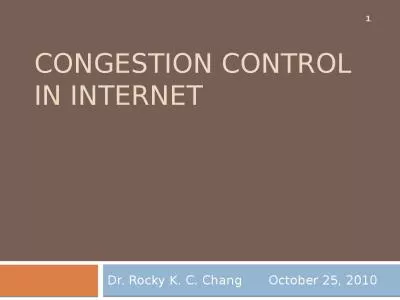PPT-Network Border Patrol: Preventing Congestion Collapse and P
Author : pamella-moone | Published Date : 2016-12-01
Celio Albuquerque Brett J Vickers Tatsuya Suda 1 Outline The Problem Existing Solutions Network Border Patrol Feedback Control Algorithm Rate Control Algorithm
Presentation Embed Code
Download Presentation
Download Presentation The PPT/PDF document "Network Border Patrol: Preventing Conges..." is the property of its rightful owner. Permission is granted to download and print the materials on this website for personal, non-commercial use only, and to display it on your personal computer provided you do not modify the materials and that you retain all copyright notices contained in the materials. By downloading content from our website, you accept the terms of this agreement.
Network Border Patrol: Preventing Congestion Collapse and P: Transcript
Download Rules Of Document
"Network Border Patrol: Preventing Congestion Collapse and P"The content belongs to its owner. You may download and print it for personal use, without modification, and keep all copyright notices. By downloading, you agree to these terms.
Related Documents

